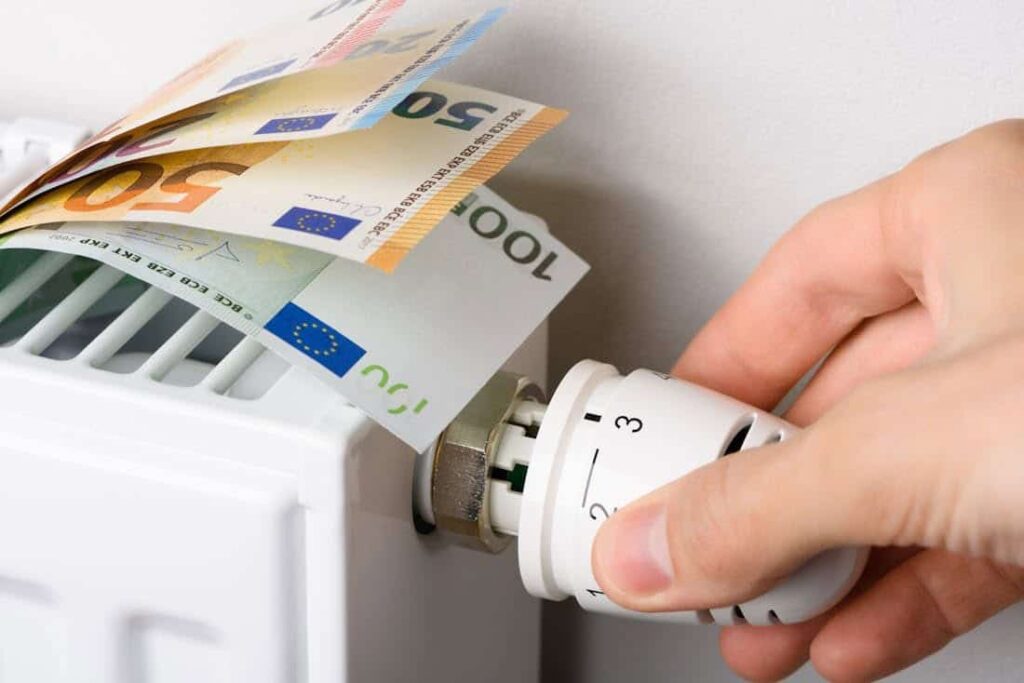When temperatures drop, many people instinctively reach for the thermostat to heat their homes. But living comfortably doesn’t have to mean turning on the gas tap. With a few smart adjustments and habits, you can retain heat better in your home and reduce your gas consumption, without sacrificing comfort.
In this article you will read, among other things: • How to close cracks and crevices to prevent heat loss • That you can retain heat by opening or closing curtains at the right time • That you should only heat the rooms you use and close doors • How to make the floor warmer and more comfortable without extra energy consumption • How to bring in fresh air without unnecessary heat loss • About alternatives such as electric blankets and heating pads to stay comfortable.
Prevent heat loss with draught excluders and sealant
Heat loss through cracks and crevices is one of the biggest energy wasters in the home. Fortunately, there are simple solutions to address this. Draught excluders are a quick and affordable way to seal gaps around windows and doors. They are easy to install and prevent cold air from entering and warm air from escaping. For larger gaps, such as where frames meet walls, silicone sealant or foam rubber is ideal. These materials fill in the gaps and effectively prevent heat loss.
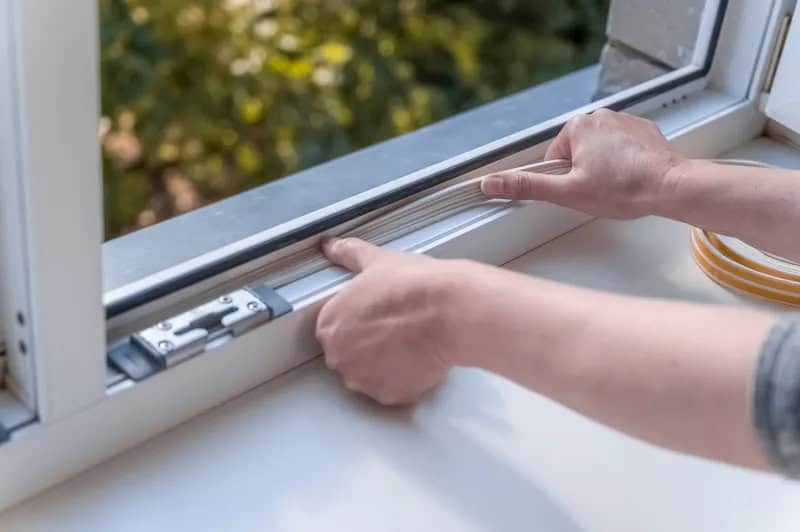
In addition to windows and doors, letterboxes and ventilation grilles should be monitored. A draft brush on the letterbox and a ventilation grille with a flap can prevent cold air from flowing in without completely blocking the ventilation. Also, check the connections around pipes and tubes that run through walls or floors. There can often be unseen draft holes here that can easily be sealed.
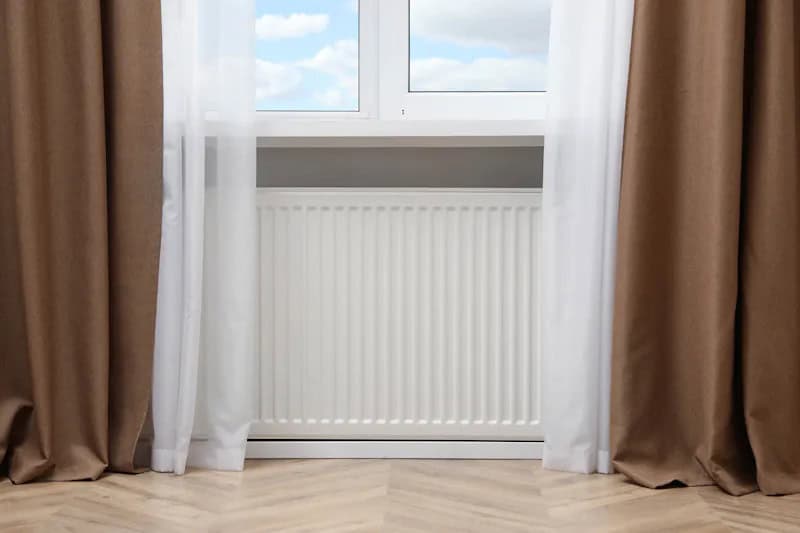
A handy tip is to check your home for drafts on a cold and windy day. Walk past windows, doors,, and other possible sources of drafts with a burning candle. Does the flame move? If so, the heat is escaping, and you can take immediate action. These small adjustments will keep your home warmer, and you will use less gas, which not only reduces your energy bill but is also good for the environment.
Use curtains wisely
Curtains can play a big role in retaining heat in your home. During the day, you can open them to let in the sun’s heat, especially for south-facing windows. This free heat source helps to warm your home naturally. Once the sun goes down, it’s important to close your curtains. They then act as an extra insulation layer, preventing heat from escaping through your windows. It’s best to choose thick or thermal curtains, which are specially designed to minimize heat loss.

However, do not cover radiators with curtains. If they block the heat from a radiator, you will heat the room less efficiently. Also, make sure that curtains fit snugly against the wall or windowsill to reduce draughts. Do you have any open spaces under your curtains? Consider using floor-length or draught-proof curtains.
Do you have roller shutters or blinds? Combine them with curtains for even better insulation. During the day, keep the roller shutters open to let in sunlight and close them in the evening to further reduce heat loss. In this way, you use curtains not only as decoration but also as a smart way to save energy and keep your home comfortably warm.
Heat in a targeted manner, not your entire house
Heating your entire home can be a significant expense, especially if you’re heating rooms that you rarely use. By heating selectively, you can not only reduce your gas consumption but also make more efficient use of the heat you already have. Start by identifying the rooms where you spend the most time, such as your living room, bedroom, or office. Make sure you keep the doors to these rooms closed to prevent heat from escaping to less-used rooms. This creates what’s known as a “heat zone,” where the temperature remains comfortable.

For spaces that you use temporarily, such as the bathroom, you can consider using electrical alternatives. An infrared panel or electric heater heats quickly and locally, so you don’t waste unnecessary energy heating the entire home. These devices are especially useful for short periods, such as while showering or working at a desk.
In addition, you can optimize the use of your heating by installing a smart thermostat. This allows you to set exactly when and where you need heat. Many smart thermostats offer the option of controlling zones in the home separately so that you only use energy for the rooms that are in use at that time.
Finally, it is useful to experiment with lower temperatures in less-used rooms. A degree or two lower in, for example, the hallway or guest room can already yield considerable savings without affecting your living comfort. By heating in a targeted manner, you get more out of your energy consumption and save on your gas bill at the same time.
Make the most of carpets and rugs
A cold floor can have a significant impact on how comfortable your home feels, especially in rooms with tiles or laminate flooring. Carpets and rugs are not only a decorative addition, but also a practical solution to retain heat. They act as an extra layer of insulation, preventing the cold from the floor from penetrating into the room. This can be particularly useful in poorly insulated homes or on the ground floor.
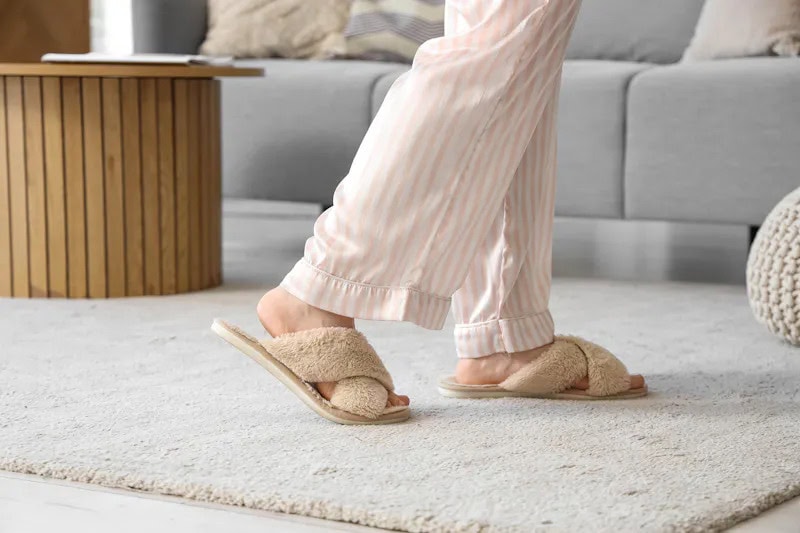
For maximum effect, choose a thick, tightly woven carpet or rug. Wool or high-pile material provides extra insulation and also feels softer and warmer under your feet. Place the rug in frequently used rooms, such as the living room or bedroom, where the comfort is immediately noticeable. Do you have underfloor heating? Then choose a rug that is suitable for this type of heating, so that the heat can still pass through it properly.
In addition to thermal comfort, a carpet also helps to improve the general atmosphere in the home. A warm rug invites you to sit or play on it, which is especially nice if you have children. In addition, a rug can help to dampen noise, which is an added benefit in busy households or apartments.
Ventilate properly
Ventilation is important for a healthy indoor climate, but incorrect ventilation can lead to unnecessary heat loss. You should therefore ventilate intelligently so that you bring in fresh air without letting the heat escape from your home. The most effective way is to ventilate briefly and powerfully. For example, open two windows opposite each other wide for a few minutes to create an airflow. This quickly refreshes the air without cooling down the walls, floors, and furniture, so that your home retains its warmth.
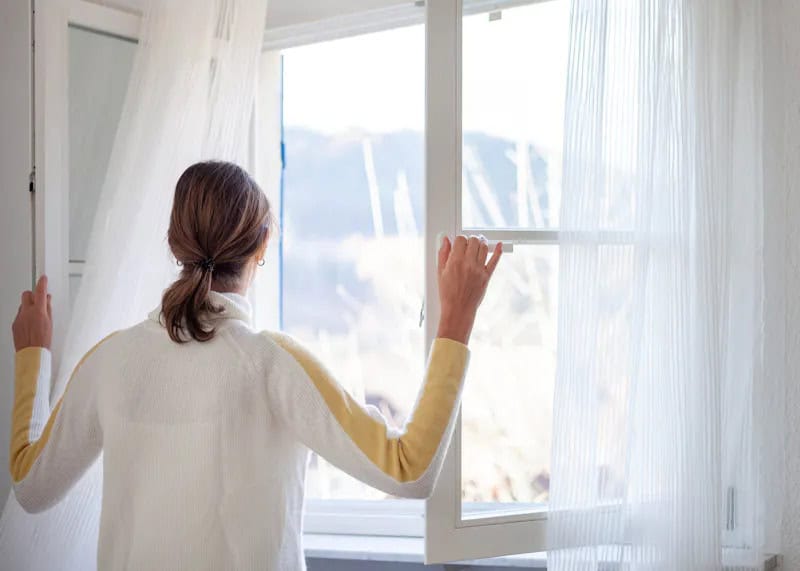
Avoid prolonged ventilation through a window that is slightly open, especially in winter. This causes you to continuously lose heat, while the air exchange is slow. Instead, use ventilation grilles that you can partially open. These provide a constant supply of fresh air without major heat loss.
Also pay attention to areas such as the kitchen and bathroom, where moisture quickly accumulates. Only use the extractor hood or mechanical ventilation when necessary and make sure that you do not leave these systems running unnecessarily long. Moist air feels colder, so removing moisture properly will not only make your home feel fresher, but also warmer.
Combine with sustainable heat sources
In addition to reducing heat loss, you can also consider combining these tips with a sustainable heat source. An electric blanket, a heating pad, or even wearing multiple layers of clothing can help you stay comfortable without using extra gas.
With these practical tips, you can keep your home comfortably warm and at the same time minimize your gas consumption. The result? A lower energy bill, a smaller ecological footprint, and a wonderfully comfortable home!

